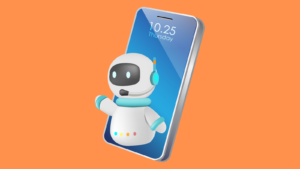Mobile technology is an almost inescapable aspect of our contemporary culture. It seems that with very few exceptions, most aspects of our lives can be enhanced, supported, and occasionally disrupted by our phones, tablet devices, and laptops. For a long time, schools sought to limit the influence that smartphones had among students. However, knowing that they are an integral element of our lifestyle, it is becoming increasingly popular for educators to encourage their use as learning support tools.
That is not to say that it is always easy. Many teachers are still working to understand the most positive ways to exploit mobile technology in the classroom. It is also an important aspect of the life of a student transitioning from school into their professional life. English language students can benefit from practising using online tools in the lingua franca of international business which can help to give them insights into navigating how they are used in English-speaking cultures.
So, what technology and strategies should you be employing? How can you and your students work together to find educational value through the tools of digital media? What challenges of the modern teaching landscape can they help address? Let us take a closer look!
Connecting Cultures
One of the benefits of mobile technology is that it has served to bring the world closer together. Just like learning a new language, our devices can be a conduit through which students gain access to meaningful experiences with new cultures. As such, teachers need to formulate activities that incorporate familiar applications and tools with safe, educationally valuable practices. Not only can this help improve fluency, but it can introduce students to multiple personal stories that help quash unhelpful cultural stereotypes.
Social media can be a particularly useful tool. Providing students with tasks that require them to create posts on their own accounts which are related to engaging on a cultural level and helping to utilise the lessons learned in their most recent English classes. Have them engage in safe, educational conversations with native speakers, or respond on Instagram or Twitter to posts from their favourite artists, musicians, or influencers. Set tasks for them to create YouTube videos. This not only uses technology in a way young people enjoy but also helps them to gain a deeper understanding of the nuances of the language.
The incorporation of social media into English language lessons should, of course, be coupled with guidance. Highlight social media mistakes they should avoid: negative posts, cyberbullying, and oversharing amongst them. For older students, this can also help them to begin their transition to college or the workplace. It helps them to understand how institutions and employers review candidates’ social media accounts and what different cultures consider appropriate. Younger students can also benefit here too, as it helps to reinforce good habits and an understanding of what makes for positive online interactions across the world.
Preparation for the Outside World
Young people in schools and universities today are among the first generations of digital natives. As such, their future is likely to be heavily technologically focused. Their workplaces will likely expect a certain degree of digital fluency, and a comfortable familiarity with utilising mobile tools for a variety of tasks. This means that introducing mobile technology to classroom learning is essential to preparing students for the world beyond school.
A useful approach here is to consider the various ways in which this technology is used in workplaces, and seek to emulate this and address the challenges in lessons. This could include:
- Communications.
There are various mobile communications approaches used in the workplace. For language students, set activities that require them to email, instant message, or video-call fellow students, or the teacher, regarding specific scenarios. This can help them to use their devices for key tasks, but also to understand how to distinguish between language aspects that are most appropriate for professional, administrative, or casual situations.
- Language Applications
Introduce them to applications that can help them navigate the international business space, but also highlight how these should be used in conjunction with their own knowledge. In language classes, show them how translation apps are useful, but also give them tasks to make corrections in syntax and grammar that artificial intelligence may have missed.
- General Appropriate Usage.
One of the benefits of openly utilising mobile technology in the classroom is the opportunity to remove the need for students to surreptitiously use their phones during lessons. Instead, focus can be placed on what types of device use are appropriate for certain circumstances and treating this openness as a trust exercise. Emphasis should also be placed on how devices can be used to support interpersonal interactions with teachers, students, and future co-workers, rather than replacing them.
Remote Learning
Inaccessibility to physical classrooms is currently an issue for a lot of students. This is particularly true during the current pandemic in which traditional school environments are not considered to be especially safe places for either students or staff. But there is a wider issue too, with those from low-income families, or living in rural communities unable to travel to classes. Thankfully, mobile technology has made remote learning a practical option.
Platforms that support this are becoming more fit for purpose. Between the rise in remote-working and the other needs arising from the pandemic, development has expanded. Students can use their smartphones, tablets, or laptops to attend their language classes via Skype or Zoom, both of which now have inbuilt features such as hand raising and group muting that allow teachers to exert some control over the lessons in the same way they do in physical spaces. Data management systems can also be implemented to help regulate remote student evaluations and time tracking.
It is also important to remember that classes serve an important social function. When students are not able to spend time among their classmates, students may well suffer from the loneliness that can come from isolation, which can also lead to depression. One of the most important strategies here is in finding ways to interact with other human beings. Teachers can help facilitate this through mobile technology; create group chat rooms for the class, arrange virtual field trips, and chill-out time together.
Conclusion
Mobile technology is too often considered a negative in students’ lives. Yet, it has the potential to expose language learners to different cultures, prepare them for the world outside school, and to ensure learning is always accessible. Teachers should be exploring ways to work with technology, rather than railing against it.




